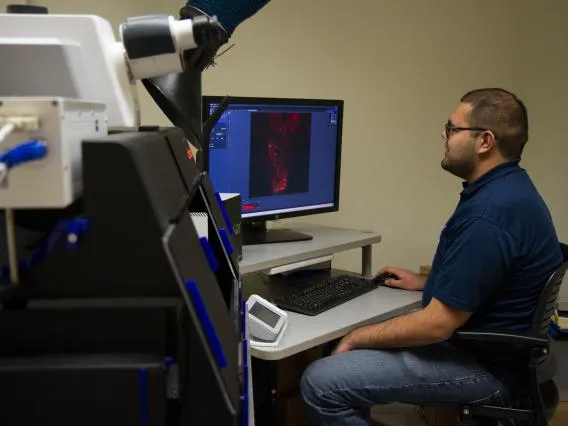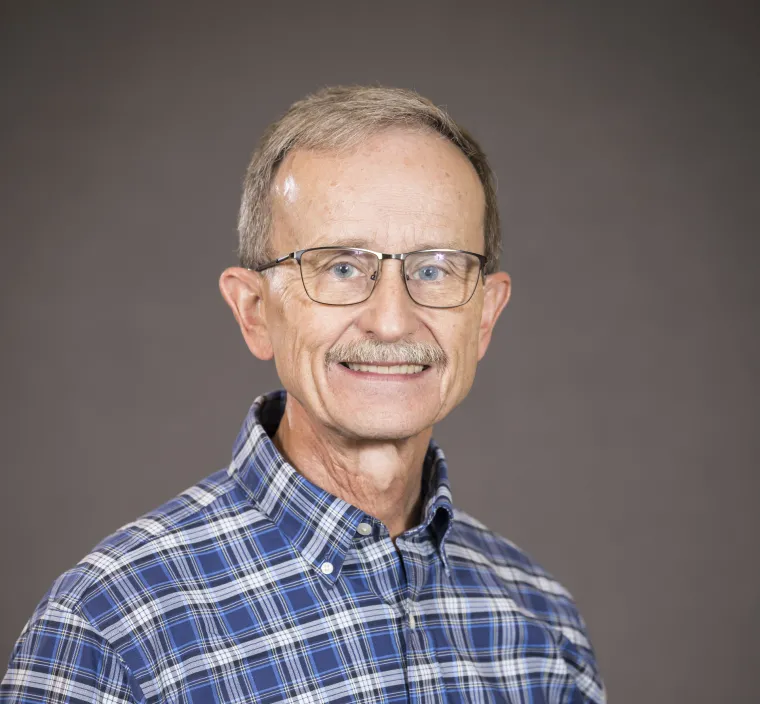Zeiss Axio Observer 7 with Apotome III Microscope
This is a multi-function, motorized inverted microscope that includes a brightfield color camera and a 14bit greyscale fluorescence camera. The addition of the Apotome III attachment allows this microscope to give crisp "confocal-like" z-stack images of thinner samples. Thinner means out to approximately 20um in thickness, making this microscope suitable for samples such as: cells on a coverslip, paraffin and standard cryostat sections.
How does this microscope create "confocal-like" images? - The Apotome III projects a grid structure into the focal plane of the specimen, then moves it into different positions using a scanning mechanism. At each grid position, the Apotome III automatically acquires a digital image. The system processes all images into one optical section with improved contrast and increased resolution using a patented algorithm. The resulting image is free from grid structures. (SOURCE: Zeiss) Deconvolution software is available to further improve the image quality of the Apotome images.
Features:
- AI sample finder - using a unique contrasting method, the microscope can find multiple wells in a plate, unstained sections on a slide, or locate the edges of a coverslip . Very useful for setting things up to scan multiple areas or large area scanning of tissue that's otherwise difficult to see by eye.
- Colibri 7 LED illuminator allows for 7 specific excitation wavelengths (including a near-IR wavelength). With just two multi-band filter sets, switching between channels is significantly faster than microscopes using filter cubes, making tile scanning in fluorescence much faster. Due to spectral overlap issues, we should be able to capture up to 5 channels in regular widefield fluorescence and 4 channels with the Apotome III (which does not work with near-IR wavelengths). To see how your dyes might work with this system, see our configuration at FPbase.
- Capable of color brightfield imaging (e.g., histology stained slides), Differential Interference Contrast (DIC, e.g., unstained cells), simple Polarized light imaging (crossed linear polarizers, e.g., Picrosirious red staining), and multiple channels of fluorescence as well as combinations of any of these imaging modes.
Specifications
- Objective lenses: 5x/0.16NA dry, 10x/0.45NA dry, 20x/0.8NA dry, 40x/1.3NA oil, 63x/1.4NA oil (a 40x/0.95NA dry objective with coverslip correction is available upon advance request)
- Colibri 7 excitation wavelengths: UV 385/30nm, V 423/44nm, B 469/38nm, G 555/30nm, Y 590/27nm, R 631/33nm, FR 735/40nm
- Zeiss 489112-9110-000 (suitable for fluorescent dyes like DAPI, FITC, DsRed, CY5, and CY7) and 489091-9110-000 (suitable for fluorescent dyes like CFP, YFP, and mCherry) multiband filter sets



